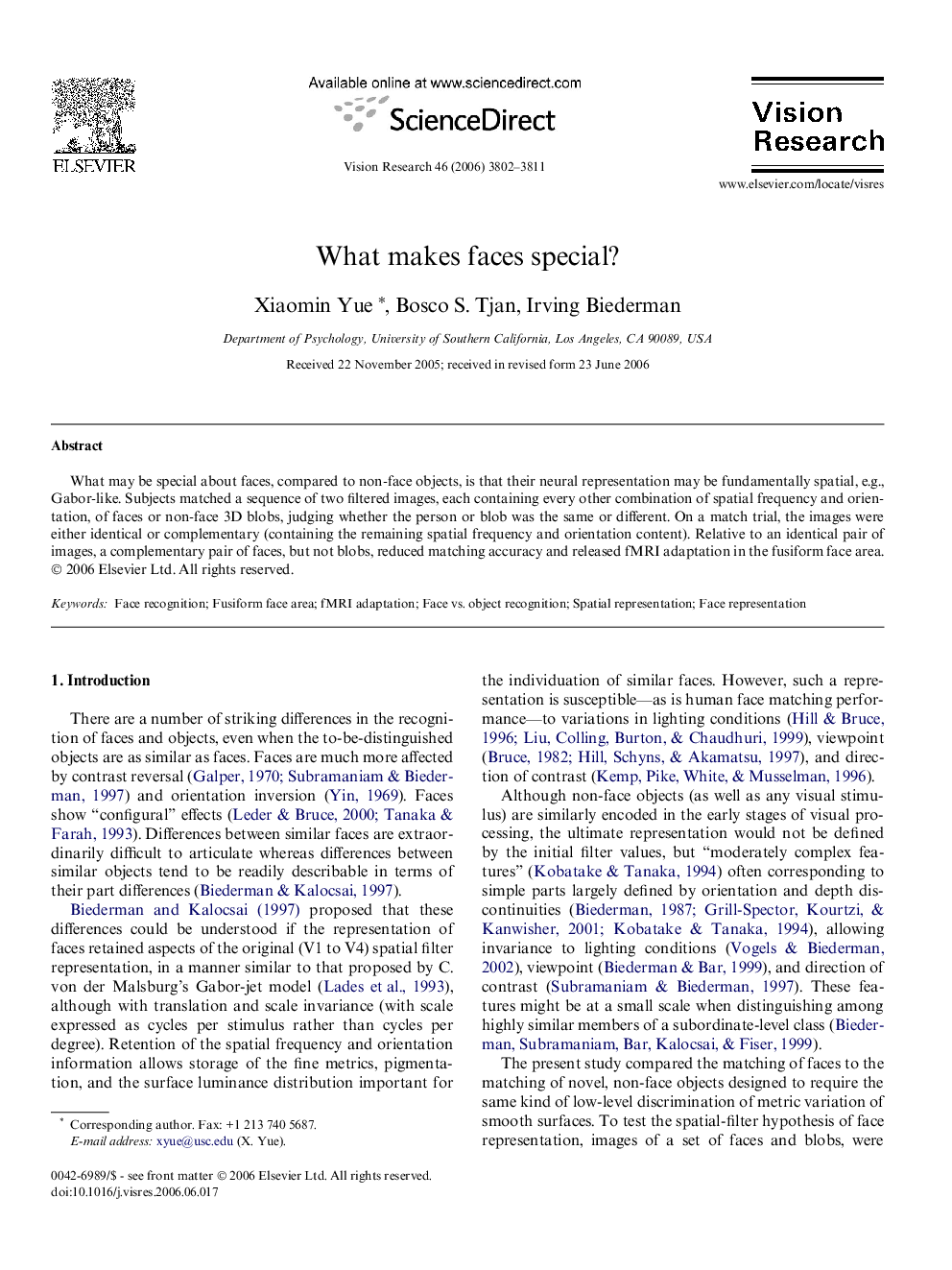| Article ID | Journal | Published Year | Pages | File Type |
|---|---|---|---|---|
| 4035398 | Vision Research | 2006 | 10 Pages |
Abstract
What may be special about faces, compared to non-face objects, is that their neural representation may be fundamentally spatial, e.g., Gabor-like. Subjects matched a sequence of two filtered images, each containing every other combination of spatial frequency and orientation, of faces or non-face 3D blobs, judging whether the person or blob was the same or different. On a match trial, the images were either identical or complementary (containing the remaining spatial frequency and orientation content). Relative to an identical pair of images, a complementary pair of faces, but not blobs, reduced matching accuracy and released fMRI adaptation in the fusiform face area.
Related Topics
Life Sciences
Neuroscience
Sensory Systems
Authors
Xiaomin Yue, Bosco S. Tjan, Irving Biederman,
